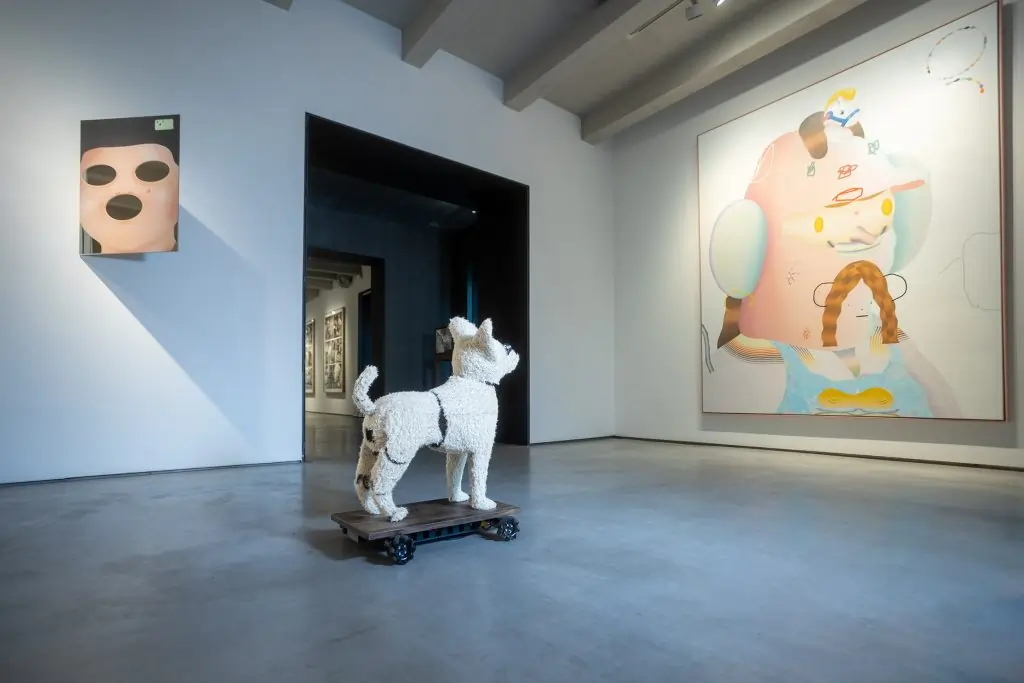Robotic Dog with Artificial Intelligence

The robotic dog, a new technological invention, is generating controversy in the art world. This robotic dog is capable of analyzing and generating objective critiques of different works of art. Since its launch, the robotic dog has been programmed with a vast amount of information about different styles, techniques and artistic currents. In addition, it has also been trained to detect patterns and trends in the comments of human art critics using artificial intelligence.
History of the Manufacturing of the Robotic Dog
THE ROBOTIC DOG THAT DIVIDES THE ART COMMUNITY
Valuable tool or attack on human creativity?
The robotic dog, a new technological invention, is generating controversy in the art world. This robotic dog is capable of analyzing and generating objective critiques of different works of art. Since its launch, the robotic dog has been programmed with a vast amount of information about different styles, techniques and artistic currents. In addition, it has also been trained to detect patterns and trends in the comments of human art critics using artificial intelligence.
Some proponents argue that this technology could be a valuable tool for art critics, allowing them to evaluate works of art in a more unbiased and objective manner due to its ability to process and analyze large amounts of information in a short period of time. time. This allows art critics to access a wide range of information and perspectives that might otherwise be impossible to obtain. Additionally, it could also be useful for artists looking to explore new techniques or styles, as you can receive suggestions and ideas based on objective feedback about their works. Another argument in favor is that artificial intelligence can help mitigate unconscious biases and cultural prejudices that often influence human perception. By relying on objective patterns and trends rather than subjective opinions, artificial intelligence can offer a fairer and more unbiased evaluation of any work of art.
Robotic dog with human perspective
However, there are also critics who argue that a robotic dog cannot compare to human perspective and creativity. First, according to critics, art is a human expression that is often charged with emotion, intuition, and subjectivity. Artificial intelligence cannot understand these emotional dimensions, which are inherent to human beings. On the other hand, they argue the incompatibility with the unique nature of art. Each work of art is unique and therefore difficult to evaluate objectively. Artificial intelligence cannot capture the complexity and richness of each work, and therefore may not be able to appreciate its true value. They further argue that there are biases and limitations of the training data.
Artificial intelligence can only evaluate works of art based on the data it has been trained on. If the training data is biased or limited, the evaluation of the artificial intelligence will be too. Another point they defend is the lack of originality and creativity, since artificial intelligence is based on previous patterns and trends, which can limit its ability to appreciate and value originality and creativity in art. And finally they express their concern about the loss of tradition and human experience; The evaluation of art is a human tradition that has been passed down through the centuries. The introduction of artificial intelligence may displace this tradition and minimize the importance of human experience in the evaluation of art.
In conclusion, the robotic dog that generates objective reviews of works of art is an innovative technology that has generated controversy in the art world. While some see this as a valuable tool for critics and artists, others believe it is an attack on human creativity and the subjectivity inherent in art criticism. In the end, the decision on whether this technology is a positive or negative addition to the art world depends on the individual perspective.
Historia de Fabricación del Perro Robótico
1. Computer-aided design and 3D modeling.
3D model concept:
The first step was defining the overall appearance, shape, and movement of the dog to have an initial rough idea of the final design in a computer-aided design (CAD) environment.
Detailed 3D model:
The second step was to define the list of components required for the desired behavior. A detailed 3D model was generated, placing each electronic component inside the body of the dog to ensure a proper fit. Additionally, the assembly of all the components together was pre-defined, ensuring easy future access to key components for maintenance purposes. Additionally, the cooling of the components inside the body is taken into account.
2. 3D printing and assembly of the head.
3D printing
Once the computer design is finalized, the entire body is divided into parts for 3D printing. The dog is made up of 22 3D-printed parts assembled together. The larger parts take approximately 36 hours each to be printed.
Head assembly
After the printing of its parts, we proceed to assemble the head. The four parts that make up the head were assembled, incorporating the wide-angle cameras, microphone, speaker, and autofocus camera.
The dog utilizes the wide-angle camera to obtain a complete view of the space or museum being analyzed and to identify the artworks it sees around it. Once the artwork is determined, the zoom camera is used to capture a higher-quality and more detailed image. The built-in speaker in the muzzle allows the dog to express itself in front of the works of art, while the microphone allows it to listen to its surroundings.
3. Electronics, wiring and body assembly
Electronics and wiring
Before assembling and closing the rest of the body, the wiring of each component was done. The cameras, the computer, the cooling fan, the microphone, the speaker, the 4 wheels, the mini thermal printer, the 15 servos and the antenna were connected.
Body assembly
Once each electronic component was connected and a basic software test was done to make sure everything was working as expected, everything was assembled; the body, tail, head and legs.
4. AI code integration and hair coating
Artificial intelligence code integration
Artificial intelligence code was integrated to detect the art pieces and transmit the information to the dog’s neck and wheels for positioning towards the desired image.
Once the dog is positioned, a focused image is passed to the AI code to perform art critique and relay the information to the leg servos and printer to share with the world.
Hair coating
Once the dog is assembled and integrated into the software, the robotic dog is manually covered with fur.
Project carried out with:
Did you like it?
Share with your friends!
Do you have a project in mind with AI or robotics?
Do not hesitate to contact us, we will give you a quote and an estimated time of execution without obligation.
